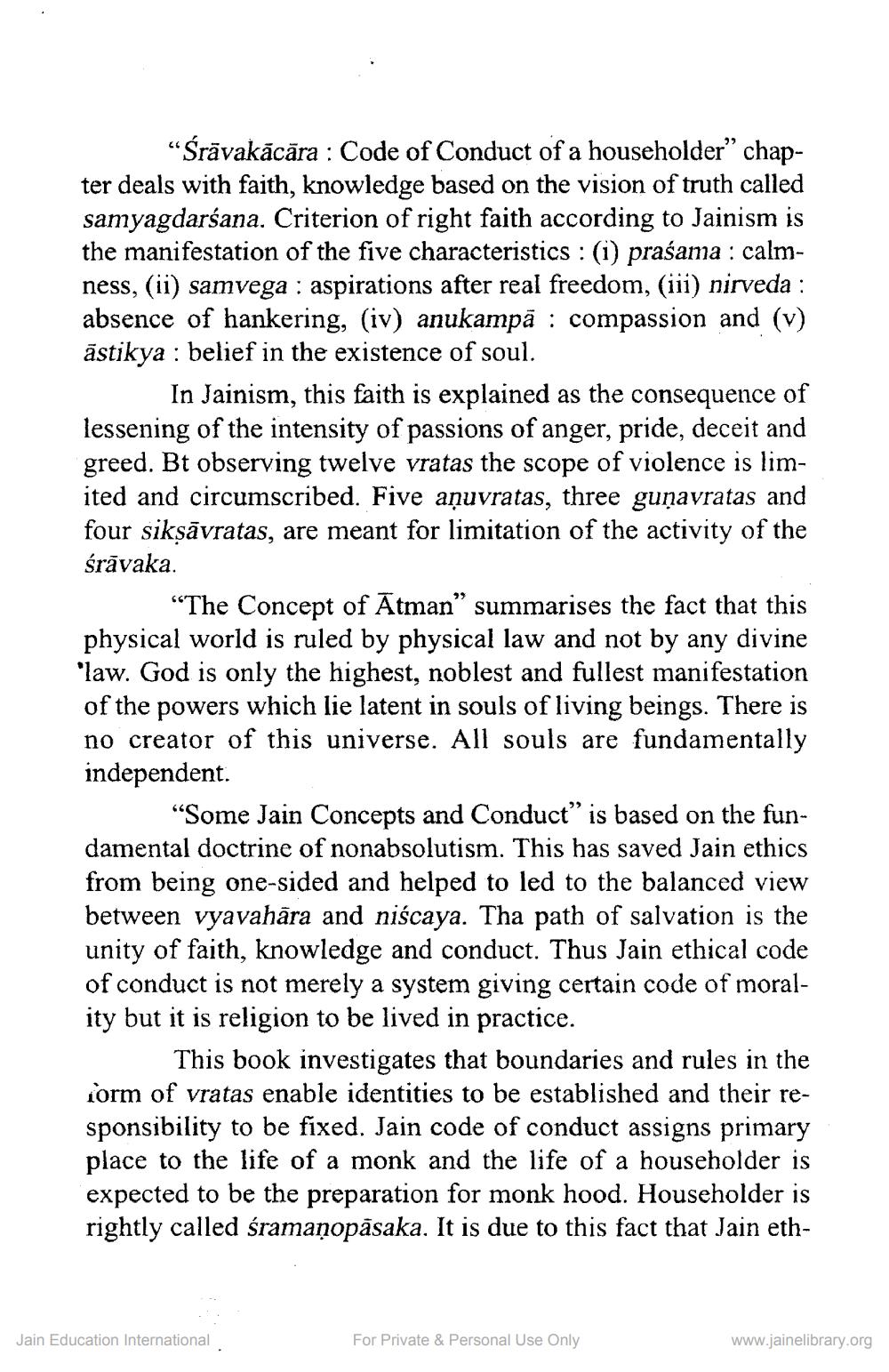Book Title: Some Jain Concepts and Conduct Author(s): Sushma Singhvi Publisher: B J Institute View full book textPage 9
________________ “Śrāvakācāra : Code of Conduct of a householder” chapter deals with faith, knowledge based on the vision of truth called samyagdarśana. Criterion of right faith according to Jainism is the manifestation of the five characteristics : (i) praśama : calmness, (ii) samvega : aspirations after real freedom, (iii) nirveda : absence of hankering, (iv) anukampā : compassion and (v) āstikya : belief in the existence of soul. In Jainism, this faith is explained as the consequence of lessening of the intensity of passions of anger, pride, deceit and greed. Bt observing twelve vratas the scope of violence is limited and circumscribed. Five aņuvratas, three guņavratas and four sikşāvratas, are meant for limitation of the activity of the śrāvaka. “The Concept of Ātman” summarises the fact that this physical world is ruled by physical law and not by any divine 'law. God is only the highest, noblest and fullest manifestation of the powers which lie latent in souls of living beings. There is no creator of this universe. All souls are fundamentally independent. "Some Jain Concepts and Conduct” is based on the fundamental doctrine of nonabsolutism. This has saved Jain ethics from being one-sided and helped to led to the balanced view between vyavahāra and niscaya. Tha path of salvation is the unity of faith, knowledge and conduct. Thus Jain ethical code of conduct is not merely a system giving certain code of morality but it is religion to be lived in practice. This book investigates that boundaries and rules in the îorm of vratas enable identities to be established and their responsibility to be fixed. Jain code of conduct assigns primary place to the life of a monk and the life of a householder is expected to be the preparation for monk hood. Householder is rightly called śramaṇopāsaka. It is due to this fact that Jain eth Jain Education International For Private & Personal Use Only www.jainelibrary.orgPage Navigation
1 ... 7 8 9 10 11 12 13 14 15 16 17 18 19 20 21 22 23 24 25 26 27 28 29 30 31 32 33 34 35 36 37 38 39 40 41 42 43 44 45 46 47 48 49 50 51 52 53 54 55 56 57 58 59 60 61 62 63 64 65 66 67 68 69 70 71 72 73 74 75 76
